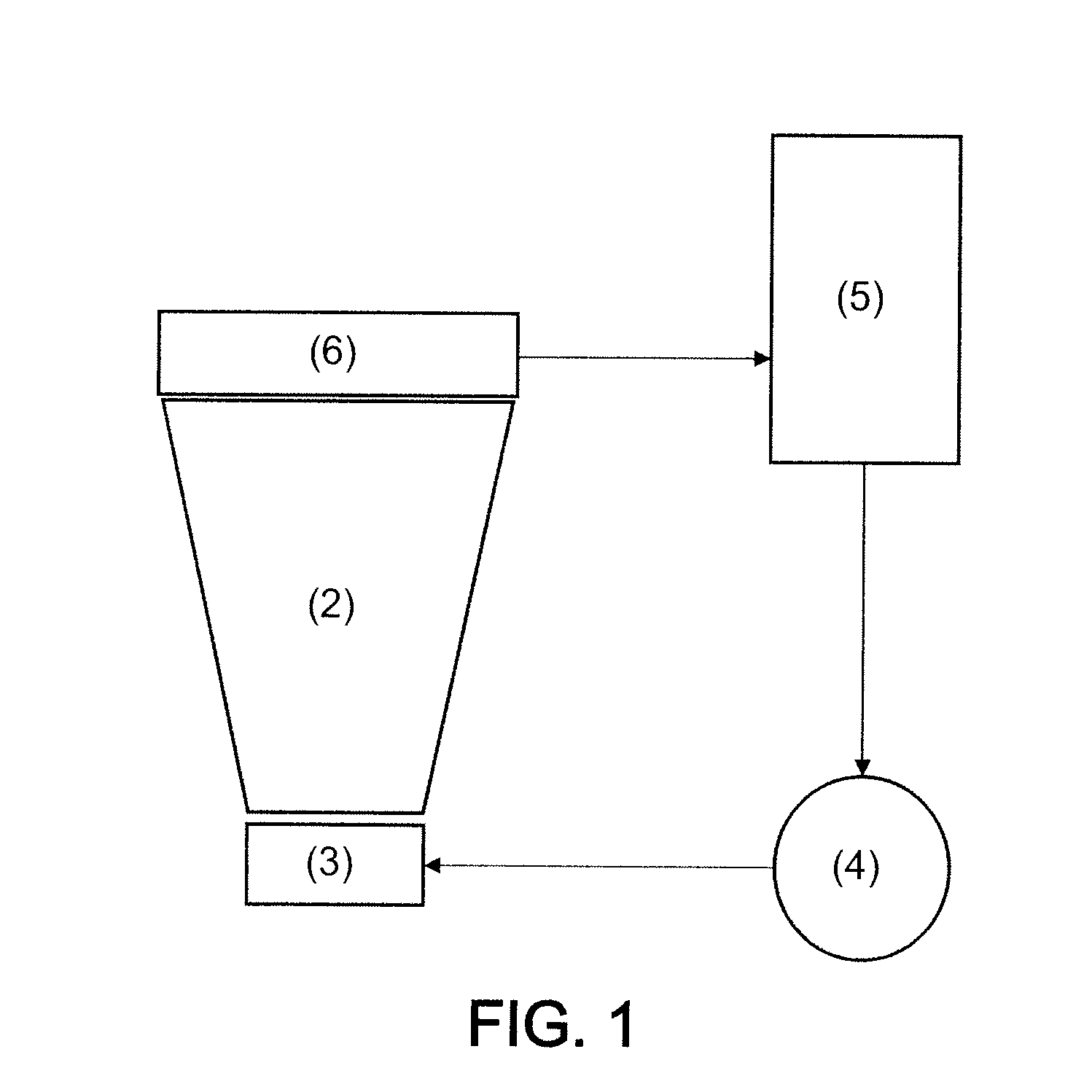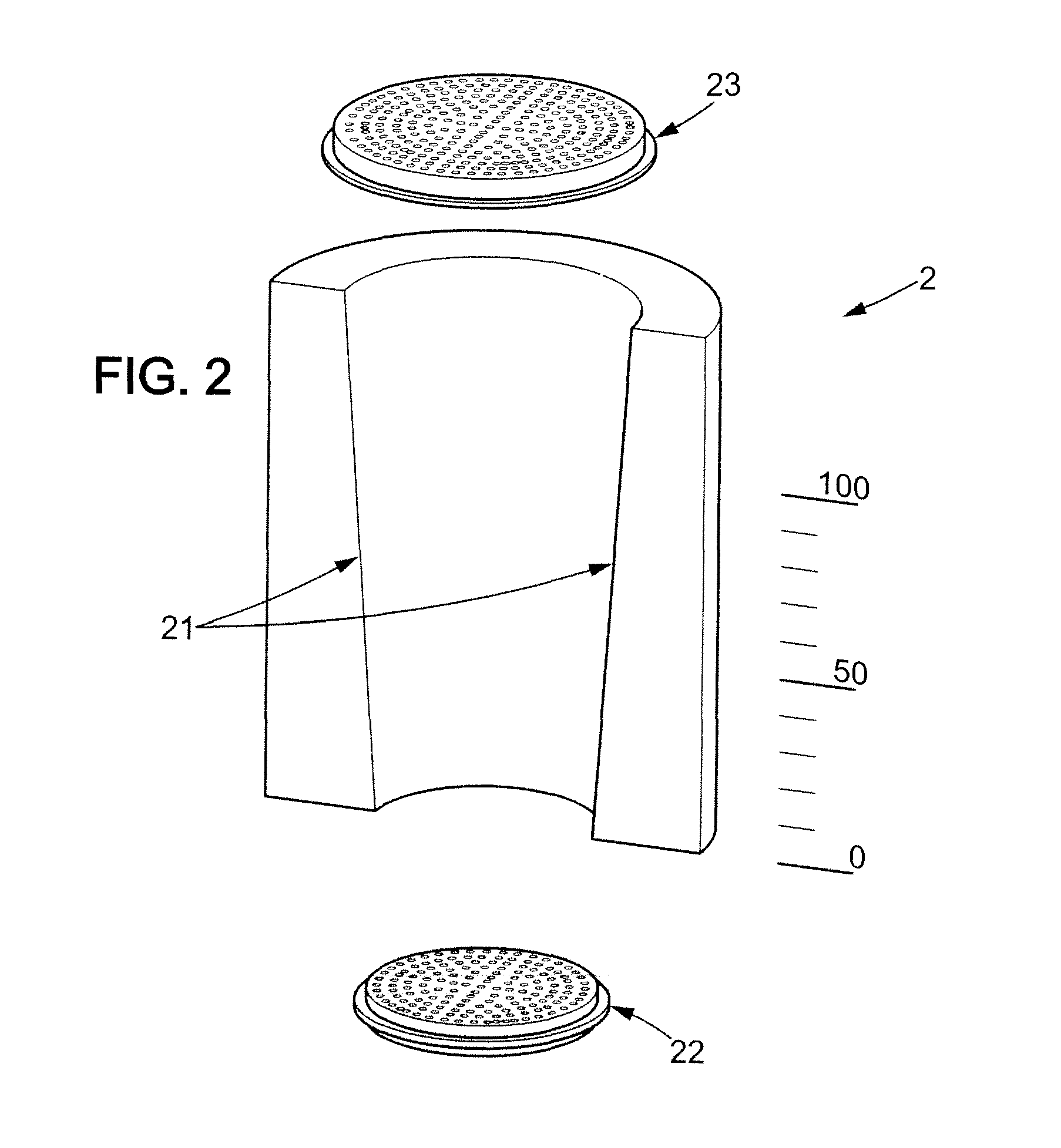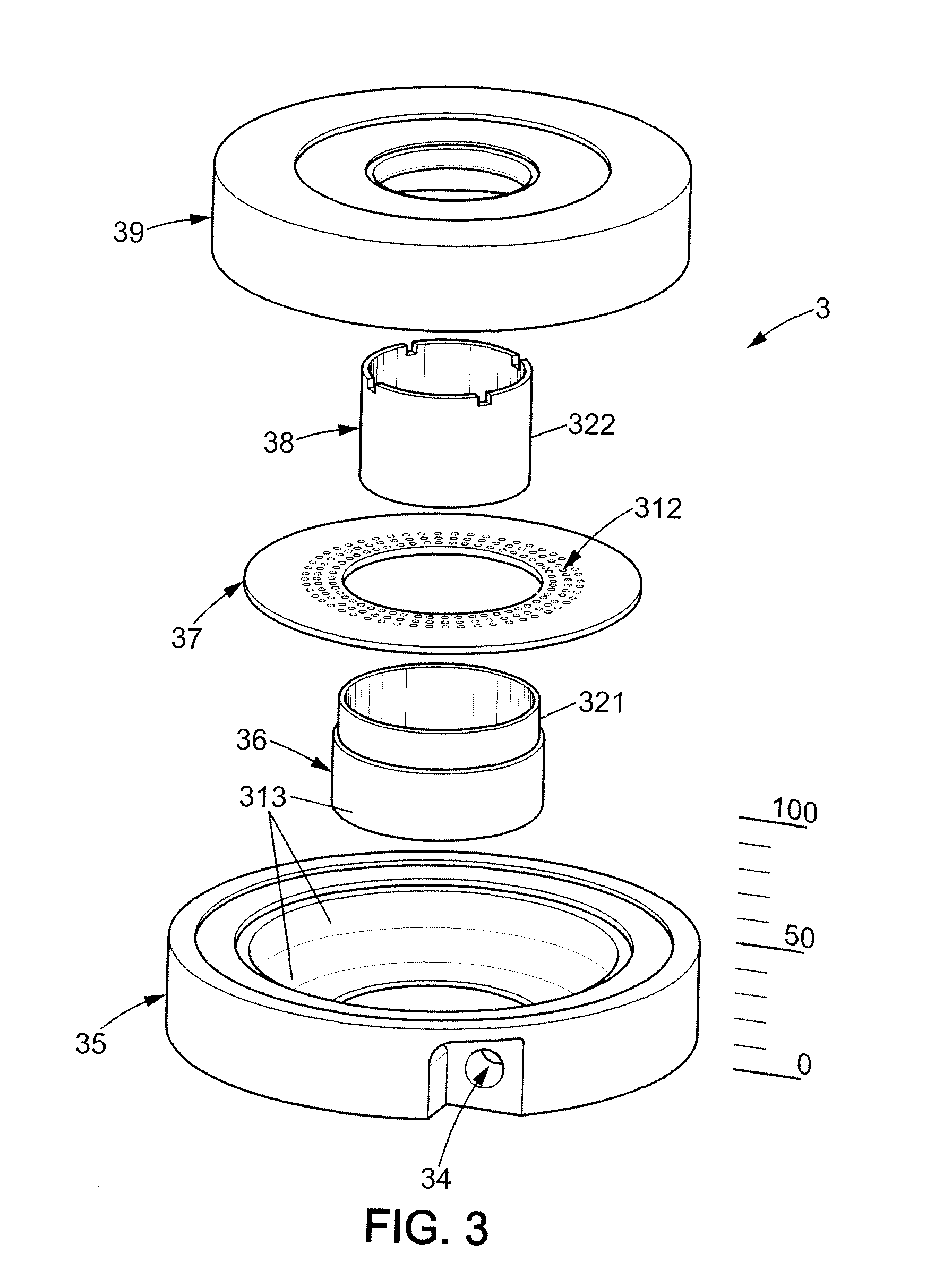Bioreactor for cell culture on a three-dimensional substrate
a three-dimensional substrate and cell culture technology, applied in bioreactors/fermenters, biomass after-treatment, biochemical apparatus and processes, etc., can solve the problems of generating turbulent flows in the flasks, significant shear levels on the surface of the substrate, and substrates that do not have sufficient mechanical performance characteristics to withstand significant transmural pressure, etc., to achieve the effect of reducing defiencies
- Summary
- Abstract
- Description
- Claims
- Application Information
AI Technical Summary
Benefits of technology
Problems solved by technology
Method used
Image
Examples
examples
[0142]A—Prototype of a Bioreactor According to the Invention
[0143]The inventors have produced the following prototype, as represented in FIGS. 2 to 6. The bioreactor comprises[0144]a culture chamber (represented in FIG. 2),[0145]an upstream flow-creating device,[0146]a downstream flow-creating device,[0147]pumping means and a tank.
[0148]FIG. 2 represents a detailed view of the culture chamber comprising the culture chamber of cylindrical type (2), the inner walls (21) of which form an inverted cone. At the inlet of the culture chamber, there is a perforated grating (22) promoting the annular flow of the culture medium in the culture chamber. There is also a perforated grating (23) placed at the outlet, preventing the grafts from circulating in the rest of the device.
[0149]FIG. 3 represents a detailed view of the upstream flow-creating device and comprises, in particular, a perforated ring (35) allowing the culture medium to flow in an inner radius (31), two concentric cylinders (36)...
PUM
 Login to View More
Login to View More Abstract
Description
Claims
Application Information
 Login to View More
Login to View More - R&D
- Intellectual Property
- Life Sciences
- Materials
- Tech Scout
- Unparalleled Data Quality
- Higher Quality Content
- 60% Fewer Hallucinations
Browse by: Latest US Patents, China's latest patents, Technical Efficacy Thesaurus, Application Domain, Technology Topic, Popular Technical Reports.
© 2025 PatSnap. All rights reserved.Legal|Privacy policy|Modern Slavery Act Transparency Statement|Sitemap|About US| Contact US: help@patsnap.com



